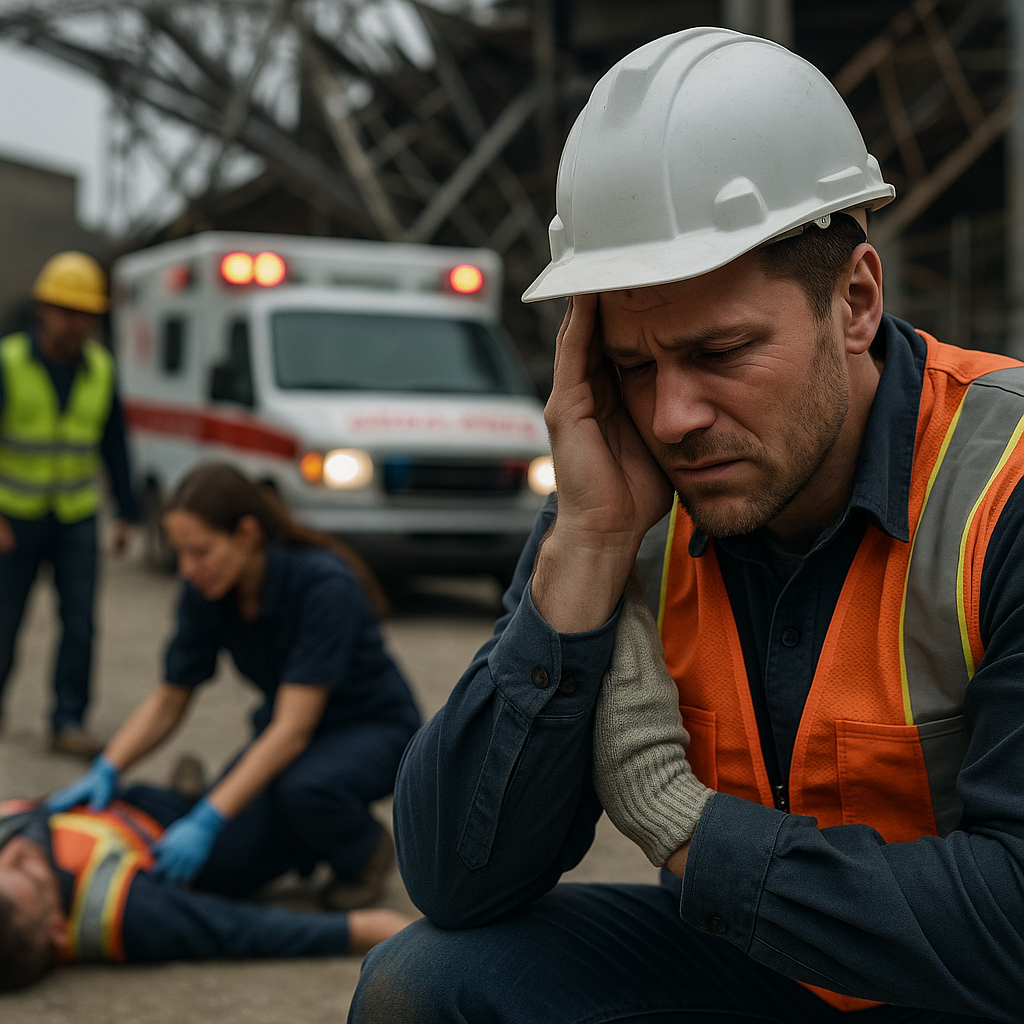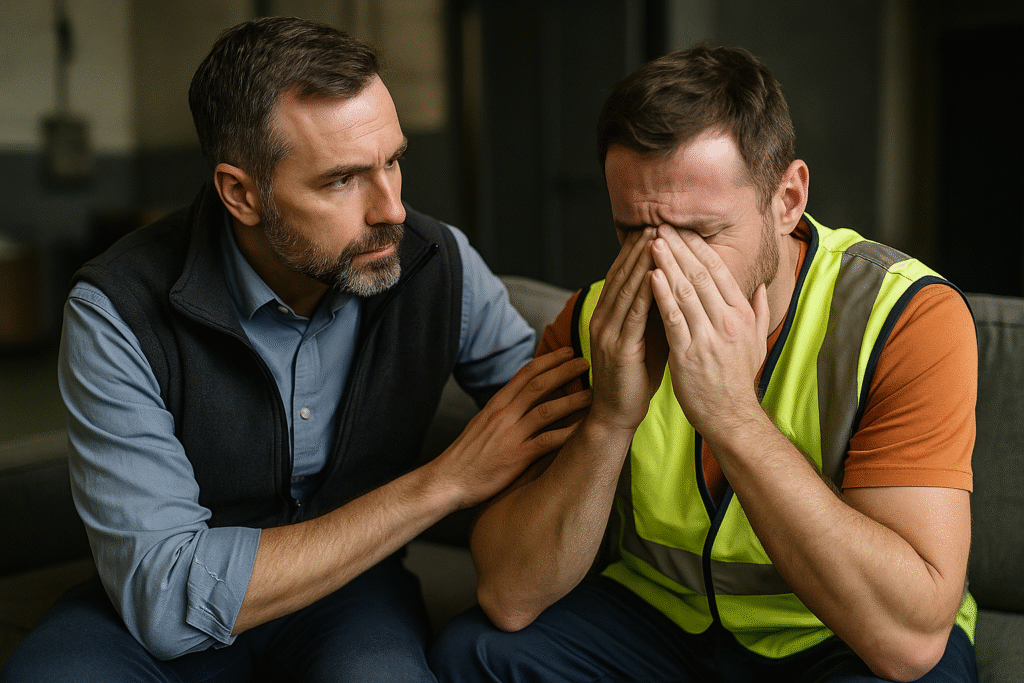Post-Incident Trauma Support is more than just an afterthought in workplace safety—it’s a vital responsibility for Occupational Health, Safety, and Environment (OHSE) professionals.
At the beginning of any incident response, most attention is focused on physical injuries, emergency measures, and operational continuity.

But often overlooked is the invisible damage: the psychological trauma that can affect workers long after the alarms stop ringing.
Why Post-Incident Trauma Support Matters
In the aftermath of a workplace incident—whether it’s a fatality, severe injury, chemical spill, fire, or near-miss—employees may experience emotional distress, anxiety, or post-traumatic stress.
These psychological effects can impair concentration, reduce productivity, increase absenteeism, and lead to long-term mental health issues if not addressed.
A comprehensive OHSE strategy must recognize this as a core component of worker well-being. Ignoring it can not only endanger recovery and morale but also increase the risk of recurring safety failures due to distraction, fear, or lack of trust in workplace systems.
The OHSE Professional’s Role in Trauma Support
Occupational safety professionals are uniquely positioned to lead post-incident trauma support.
Their understanding of workplace risks, systems, and culture makes them credible and compassionate points of contact for traumatized staff. Here’s how OHSE personnel can support recovery:
Immediate Psychological First Aid
Just like physical first aid, psychological first aid should start promptly. Workers need:
- A safe space to express what they experienced
- Validation of their feelings
- Simple, non-intrusive questions
- Access to immediate support or referrals
OHSE professionals should be trained to deliver this basic level of care or work in partnership with HR and mental health professionals.
Coordinating Critical Incident Stress Debriefings (CISD)
CISD is a structured, voluntary conversation that allows affected employees to process what happened in a supportive setting.
These should occur within 72 hours of the incident and be facilitated by professionals familiar with crisis counseling. OHSE teams can coordinate these sessions, ensure attendance, and act as liaisons.
Reinforcing the Safety Culture
After traumatic incidents, confidence in workplace safety can decline. It’s crucial for OHSE staff to:
- Reaffirm safety procedures and controls
- Communicate improvements or changes made
- Encourage reporting and transparency without blame
- Lead by example to show the workplace is safe and cared for
Long-Term Mental Health Considerations
Some employees may experience delayed symptoms of trauma, such as insomnia, depression, or increased substance use. OHSE roles don’t replace therapists but can:
- Share EAP (Employee Assistance Program) resources
- Integrate mental health into routine safety talks
- Encourage breaks, peer check-ins, and self-care
- Partner with HR to provide flexibility and accommodations
Legal and Ethical Obligations
In jurisdictions like Canada, Australia, and the EU, psychological health is increasingly being recognized under workplace safety laws. Employers may be legally required to take reasonable steps to prevent further psychological harm.
For instance:
- The Canadian Centre for Occupational Health and Safety (CCOHS) outlines employers’ duty to provide a psychologically safe workplace.
- According to Safe Work Australia, managing psychosocial hazards is a legal requirement under WHS legislation.
- The UK’s HSE (Health and Safety Executive) provides stress management standards, especially following traumatic events.
Providing post-incident trauma support isn’t just ethical—it helps fulfill compliance obligations. Neglect can result in reputational harm, legal challenges, or repeat incidents.
Real-Life Example: A Construction Site Collapse
Following a structural collapse on a construction site in Ontario, multiple workers witnessed a coworker being seriously injured.
While emergency services and OHSE professionals managed the scene efficiently, the mental toll became clear over the following week—panic attacks, sleeplessness, and fear of returning to the site.
The employer, guided by its OHSE team, initiated trauma counseling, offered paid leave, and hosted a series of peer-led safety discussions.
As a result, workers not only returned but reported a stronger trust in safety leadership.
Best Practices for Post-Incident Trauma Support

| Step | Action |
|---|---|
| Acknowledge | Recognize emotional responses after incidents |
| Listen | Provide confidential spaces for workers to talk |
| Connect | Link staff to mental health professionals or EAPs |
| Follow Up | Check in regularly with those most affected |
| Document and Improve | Record support actions and evaluate effectiveness |
Internal policies should include trauma response plans, while external resources can guide best practices:
- Mental Health Commission of Canada – Workplace Resources
- OHSE.ca – Canadian OHSE Articles
- CCOHS Psychological Health
- Safe Work Australia – Mental Health
- Workplace Strategies for Mental Health (Canada Life)
All of the above are DoFollow links to authoritative sources on post-incident support and mental health at work.
Final Thoughts
Post-Incident Trauma Support is not optional in a modern OHSE framework—it’s a vital safeguard for long-term worker well-being and organizational safety culture.
When incidents happen, the physical risks are immediate—but the psychological ones often linger longer. OHSE professionals who act quickly, compassionately, and systematically can make a lasting difference.

No comments yet